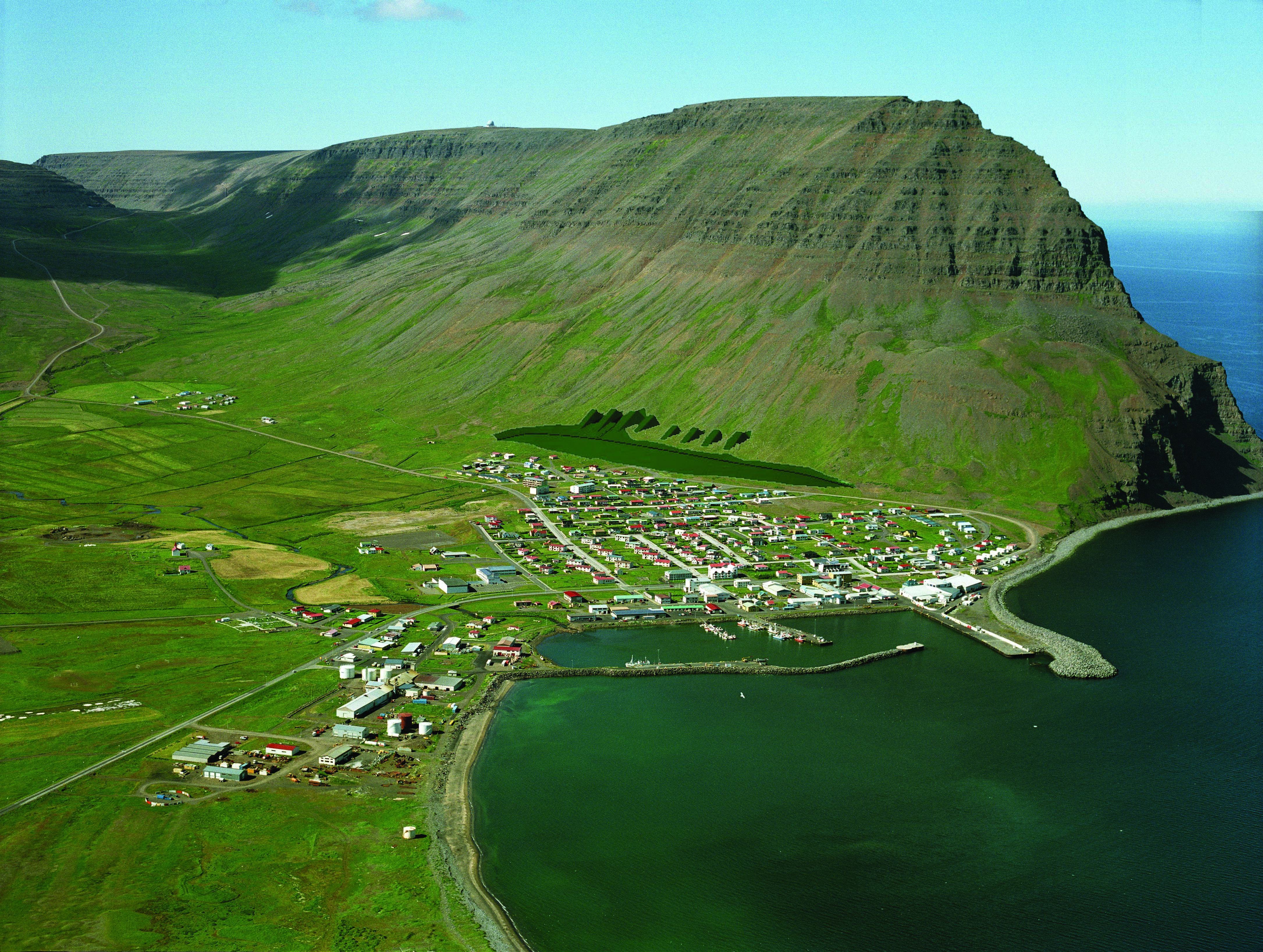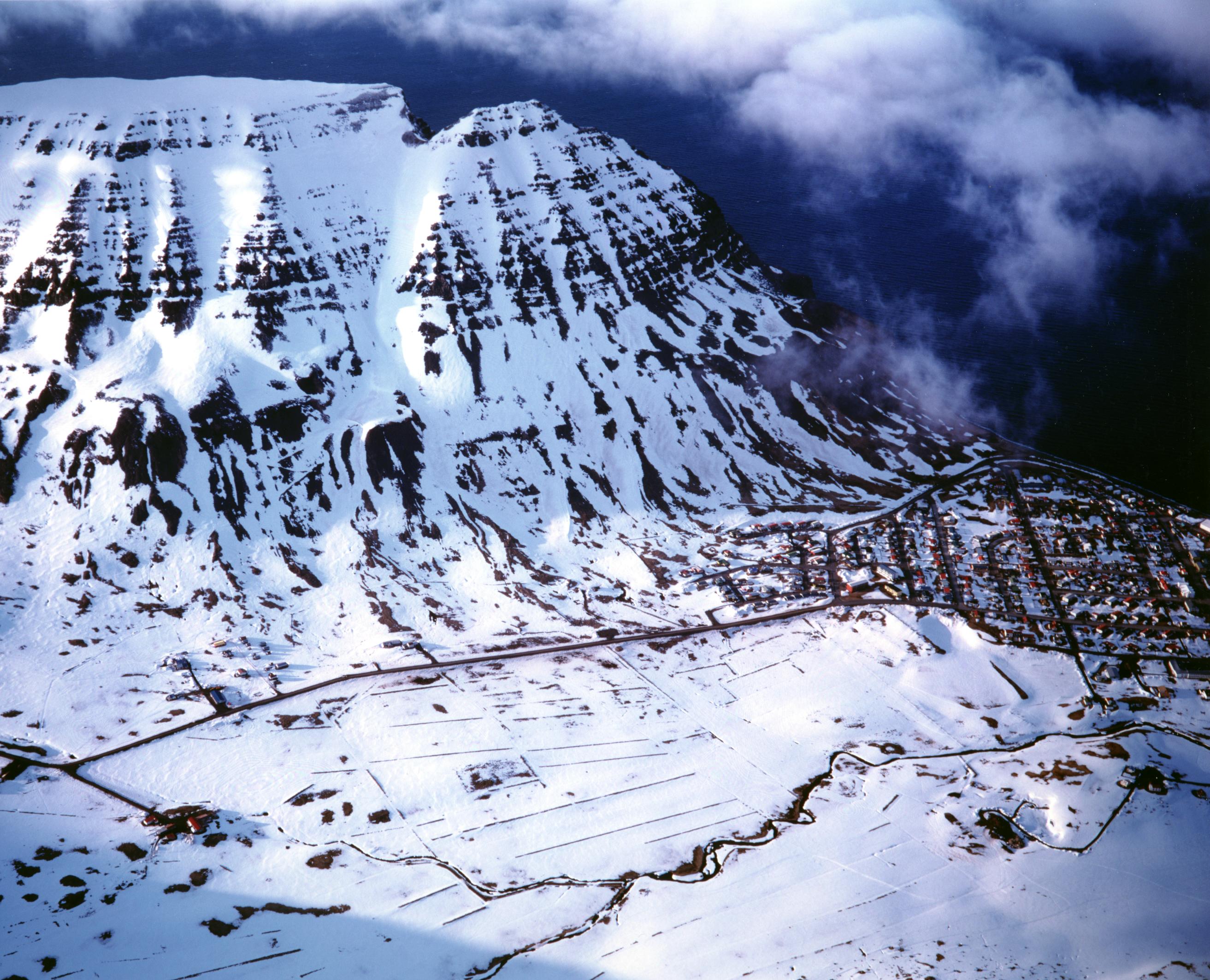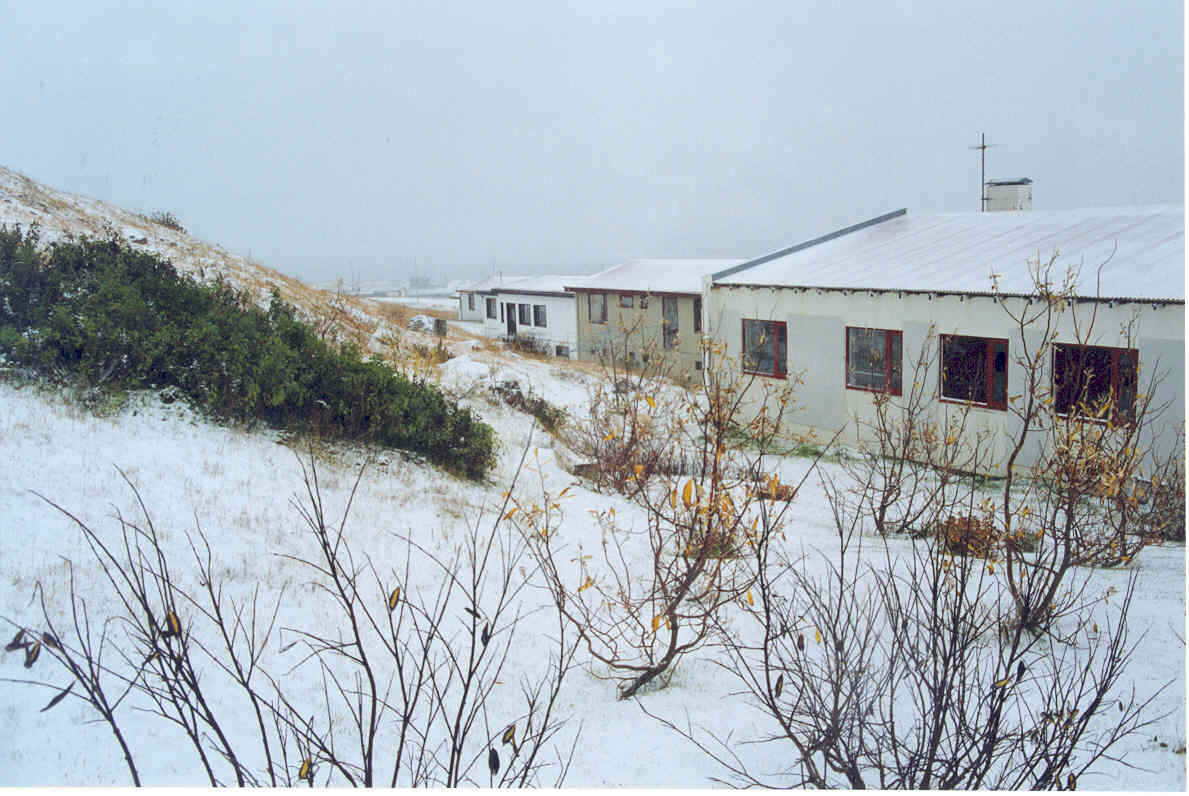Ýmsar humyndir um tegund varna voru skoðaðar við upphaf vinnu. Má þar nefna uppstakastoðvirki og ýmsar útfærslur af þver- og leiðigörðum.
Nánari skoðun á upptakasvæðunum leiddi í ljós að þykkt snævar í giljunum var það mikil að ekki var treystandi á slíka lausn. Varnir á úthlaupssvæði urðu því fyrir valinu, sem reyndist vera þegar byggt svæði. Meðal þess sem skoðað var voru þvergarðar, leiðigarðar og sambland af þeim. Fljótlega kom í ljós að ekki yrði auðvelt að verja byggðina án þess að fjarlægja efstu húsaröðina, Dísarland.
Several different layouts of mitigation measures were considered such as supporting structures in starting zone and different form of catching- and deflecting dams in run-out zone.
A closer look at the snow height in the starting zones in Traðarhyrna indicated too much snow for supporting structures so mitigation in run-out zone was the only alternative. Several different alternatives of catching dams, deflecting dams and mixture of them, with and without mounds were considered. Due to limited space for mitigation measures the structures had to be at the root of the hill which also lead to high design velocities and removal of several houses. A catching dam with eight mounds uphill was considered the best alternative.
Tæknilegar upplýsingar/Technical data:
- Heildar lengd/ Total length: 700 m
- Hámarks hæð garðs/ Max height of dam: 22 m
- Fjöldi keila/ Number of mounds: 8
- Hæð keila/ Height of mounds: 8 m
- Snjótæknileg hönnun/ Preliminary design: ORION Consulting, NGI, VA
- Verkfræðihönnun/ Detail design & bid doc.: Línuhönnun (now Efla)

Bolungarvik w/model of catching dam and mounds used for introduction prior to construction. Aerial photo: Mats Wibelund 
Aerial photo of Bolungarvík and Traðarhyrna. Photo: Oddur Sigurðsson 
These houses had to be removed to make place for catching dam.

